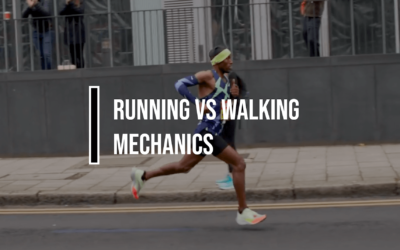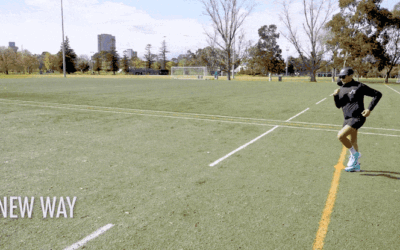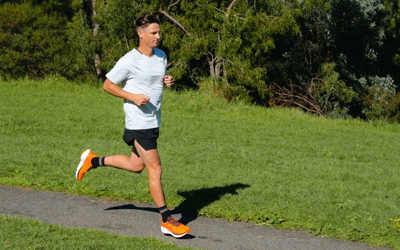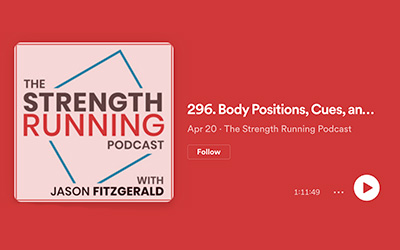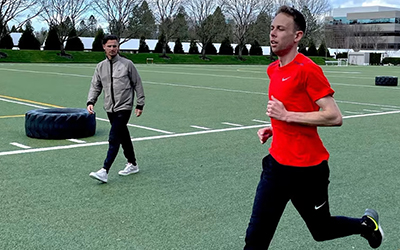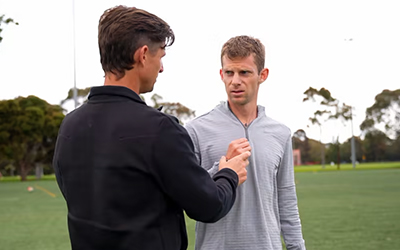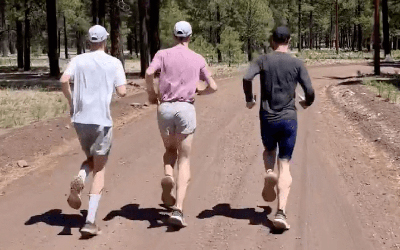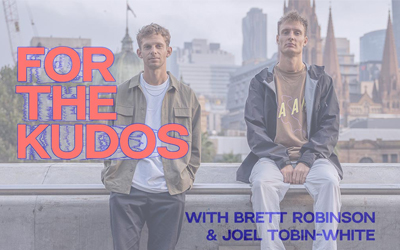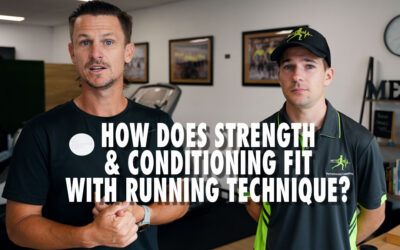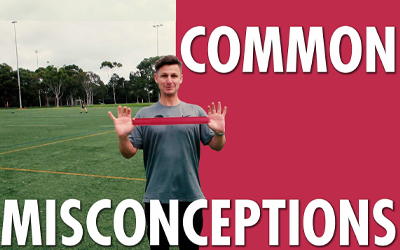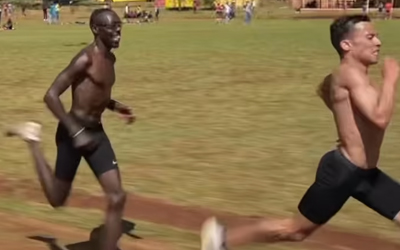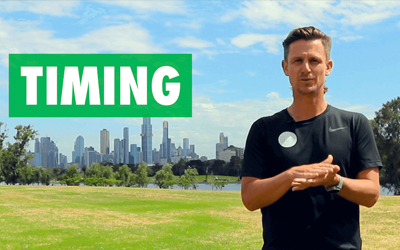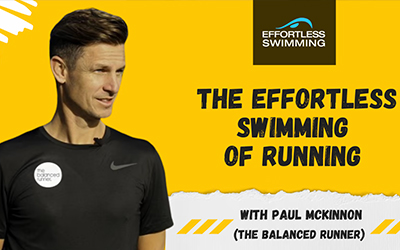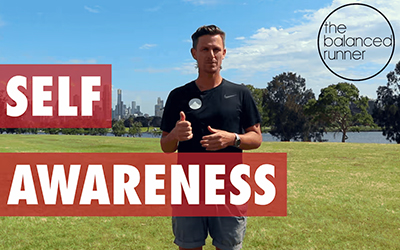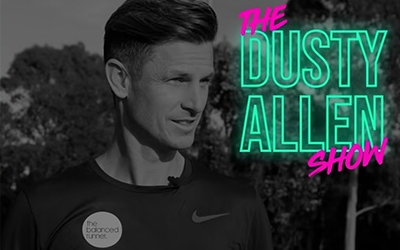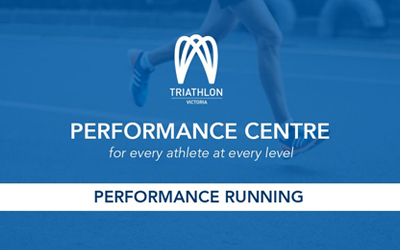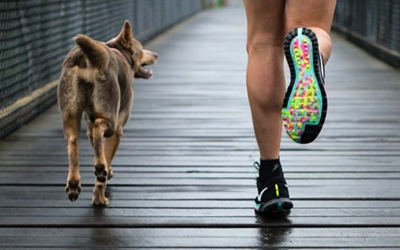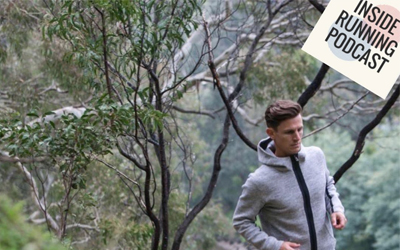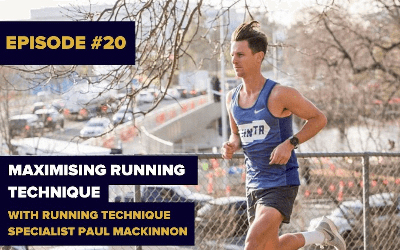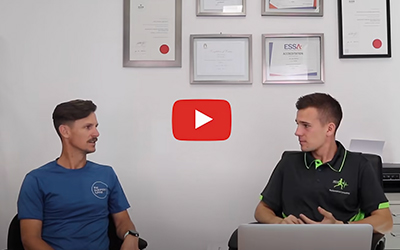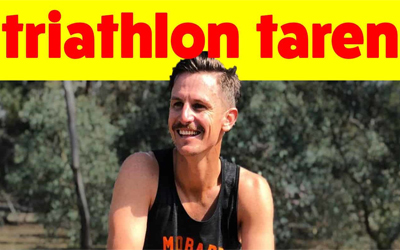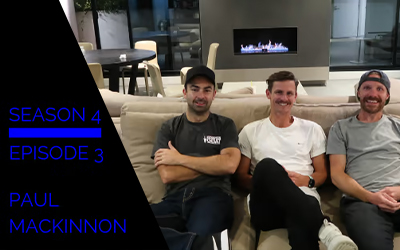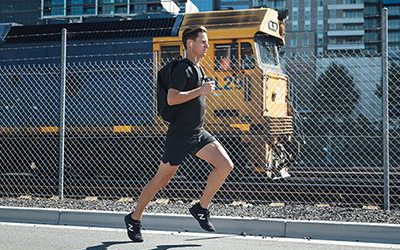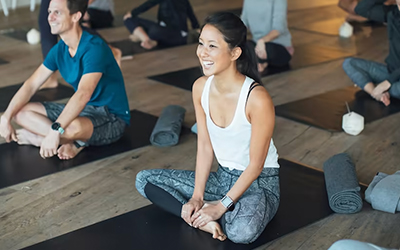How Do You Hold Your Shoulders When Running?
14 April 2022 | Category: Running Technique Advice
This article is going to look specifically at the shoulders, and the affect they can have on your overall technique. We will start this by saying many of these are visual elements – so we also recommend watching the video below in which Paul walks through how to hold your shoulders with the visual element. Now, I’m sure many of you have heard about relaxing through the shoulders and keeping loose in the shoulders. But what does that really mean?
Often we will see people who think that they’re relaxing through the shoulders, but they’re actually just relaxed through their wrists and their hands. And it feels like this is nice and fluffy and loose, but doing nothing to do with the shoulders.
The starting exercise to the shoulder position is back to Self-Awareness. In this case the questions to ask yourself, are:
- Do you hold tension?
- If you do hold tension in your shoulders, where do you hold it?
- Is it through the trapezius which extends the top of the shoulders and base of the neck, or is in the rhomboids which is in between the should blades?
For the majority of us, we will actually hold tension through your trapezius, towards the top of the shoulders or base of the neck. The easiest way to think about your shoulder blades is if you start to run and you close the gap between your shoulder blades. Making that movement will help you to get a good understanding if you are holding tension through your shoulders. The other way is if you feel like you are shrugging or pulling out through the shoulders, then you know that you are actually holding a fair bit of tension in that area.
The third way is if you go running and at the end of the run, your shoulders are more fatigued than your legs. In this case there is also a fair chance that you are holding a lot of tension through the shoulders. So how do we fix this? We need to focus on where you hold your tension. So rather than just thinking relaxed, or thinking loose, we want to think about let’s switch off a particular muscle or open up that gap that you are closing.
From here we are trying to find a neutral position through the shoulders. So, just while you are standing, there are a few things you can try:
- If you feel like your shoulder blades close or your shoulders are pulled back, let the space in the middle of your back open up, and be nice and neutral. Not to the full extent of rounding the shoulders, or collapsing through the torso, but into a neutral position with more space between the shoulder blades.
- If you feel it in higher up on top of the shoulders or base of the neck, allow yourself to drop and open up. Just relax until you find a neutral and comfortable, relaxed position.
Then they key when you start running is to stay relaxed, and you can keep switched off through your muscles. This will allow your arms to swing freely rather than trying to swing through tension. Quite often you will fall back into the tense position when you start to get fatigued or when you start to try and run faster. From there it is a matter of being aware, recognising what it is, and switching the muscles back off again.
This is a very first look at the shoulder position and how to improve it to help your running, within The Balanced Runner program included with all of our Membership Options, there is an in-depth cue early in the program that helps you to get into the perfect shoulder position, and with common examples of what to watch out for.
It’s amazing the impact this shoulder position can have on your overall running technique and how much extra tension through the upper body can inhibit and affect your movement.
Enjoy your run!
Check out more articles, podcast appearances and running technique tips:
One of the foundations of Running Technique explained – Running vs Walking Mechanic
Paul breaks down the common mechanics in both walking and running, and how using the proper running mechanic can make you more powerful, more economical and less prone to injury.
Is There An Ideal Cadence When Running?
Cadence in running is so poorly used and in most cases poorly understood.For those wondering, cadence is the number of steps taken within a minute. It is an outcome…
Broadsheet Feature Article: The Science To Help You Become a Better Runner
Broadsheet Feature Article: The Science To Help You Become a Better Runner 3 June 2023 | Category: Running Technique AdviceThis article originally appeared in Broadsheet in May 2023 as a feature between Paul MacKinnon and Puma Nitro. Photography by...
The Ultimate Running Form Episode with the Strength Running Podcast
The Ultimate Running Form Episode with the Strength Running Podcast 10 May 2023 | Category: PodcastPaul joined Jason Fitzgerald on the Strength Running Podcast for a great chat about everything running & running form. This podcast appearance...
Running Technique learnings from Galen Rupp
I have been lucky enough to work with Galen Rupp a few times over the past year as he looked to get back to his best for the marathon, find out some of the key learnings.
Congratulations Brett Robinson – Australian Marathon Record
I’ve been working with Brett Robinson for a little while now and a few weeks ago in the lead up to the Fukuoka Marathon we recorded the session to give some insight into Brett’s focus.
Jakob & Henrik Ingebrigtsen Form Comparison
This is just a very short breakdown of the form of the Ingebrigtsen brothers while they jog together.
Paul joins For The Kudos Podcast for a Technique Q&A
Paul has been working with both Brett and Joel over the past couple of years to improve their technique and their performance, so the boys invited him on to one of the Question & Answer episodes of the Podcast.
Running Technique Coaching vs Strength & Conditioning
If you have followed Paul for a while, you will know that he likes to have a bit of fun at the expense of the idea of a strength program improving your running technique. In this discussion with Exercise Scientist Nick Jankovskis we take the chance to explore where strength training does improve running and where it does not.
Common Misconceptions – Do Running Drills and Activation Improve Your Technique?
There are many common misconceptions around running and running technique. We are here to break down some common ones. Do drills, strength work and activation help your running technique?
An example of Stride & Cadence with Paul Chelimo and Luis Orta
I saw this video recently and thought it was a great opportunity to highlight the difference movement can make to running at top speed.
If you’ve been following for a while you’ll know I don’t use cadence as a cue, but it is a good indicator. In this case Paul Chelimo is 204 and Luis Orta is 240.
Timing of your movement when running
The timing of your movement is critical when running. This article outlines how to think about this and the affect it can have on injury. Running in time on your left and right side is a vital aspect of becoming a balanced runner.
Paul joins the Effortless Swimming Podcast
Paul and Brenton connected a little while ago over the similarities of their methodology and disruption of technique coaching, hence Brenton’s name for this podcast is ‘The Effortless Swimming of Running’, or as we might call it, Paul joined ‘The Balanced Runner of Swimming’!
How Do You Identify Your Running Technique?
A lot of people don’t take the time to be fully aware of what their body is doing while they are running. This article explains how to work through each part of your body and feel what is doing while you are running, and how to feel your own movement pattern.
Paul joins the Dusty Allen Show Podcast
The Dusty Allen show is borne on the premise that extraordinary stories are everywhere, you just need to know where to find them. Listen to the chat between Paul and Dusty.
Triathlon Victoria – The Performance Centre: Performance Running
Watch the Triathlon Victoria Performance Centre series, where Paul joined a host of other high-level coaches to discuss various aspects of performance running.
Why you should listen to your foot strike while running
Find out why all runners should listen to their feet and their ground contact when running on a wet or loose surface.
The Inside Running Podcast Featuring Paul Mackinnon
The Inside Running Podcast Featuring Paul Mackinnon Article | 28/1/2020 | Category: PodcastAfter working with Julian Spence on his technique over the last few months, Paul joins him for a chat about running, life and his philosophy of running...
Maximising running technique with the Athlete’s Garage Podcast
Maximising running technique with the Athlete’s Garage Podcast Article | 20 December 2019 | Category: PodcastThe Athlete’s Garage is a podcast by The Motion Mechanic and Paul joined them in November 2019 to discuss everything about running...
Who Taught You to Run? With METS Performance Consulting
Who Taught You to Run? With METS Performance ConsultingPaul joins the team from METS Performance Consulting on the Physiology Secrets podcast to discuss running technique and the potential impact it has on performance for all athletes.Have you ever...
Triathlon Taren Podcast Interview
Triathlon Taren Podcast InterviewPaul joined Triathlon Taren for a video based session to review his technique and then an interview on his Podcast. You can listen below and check out more of Taren’s work at https://mymottiv.com/ or on YouTube at...
Runner Chats with Paul Mackinnon
Runner Chats with Paul Mackinnon A laid back chat about life and running with Pete and Nathan from Runner Chats. Ranging from everything from hockey to Run the Bay Relay and a little bit of technique. Check out the podcast below or the rest of...
Zero to Half-Marathon in 4 Months
Zero to Half-Marathon in 4 Months 3 May 2018 | Category: Running Technique AdviceThis article was first featured in Men’s Fitness Magazine. Paul MacKinnon, aka the balanced runner, gives us some simple tips on how to get from the couch to a half...
Post from Spoonful of Sarah: The one fix that changed my running life
Post from Spoonful of Sarah: The one fix that changed my running life This post is originally from Spoonful of Sarah – The one fix that changed my running life by Sarah HollowayAs you may also know, running is not my exercise of choice both because...
